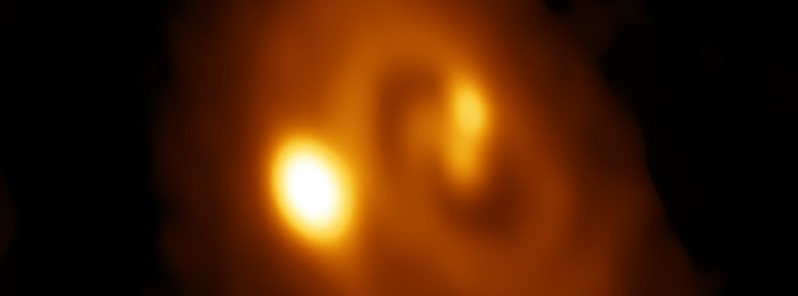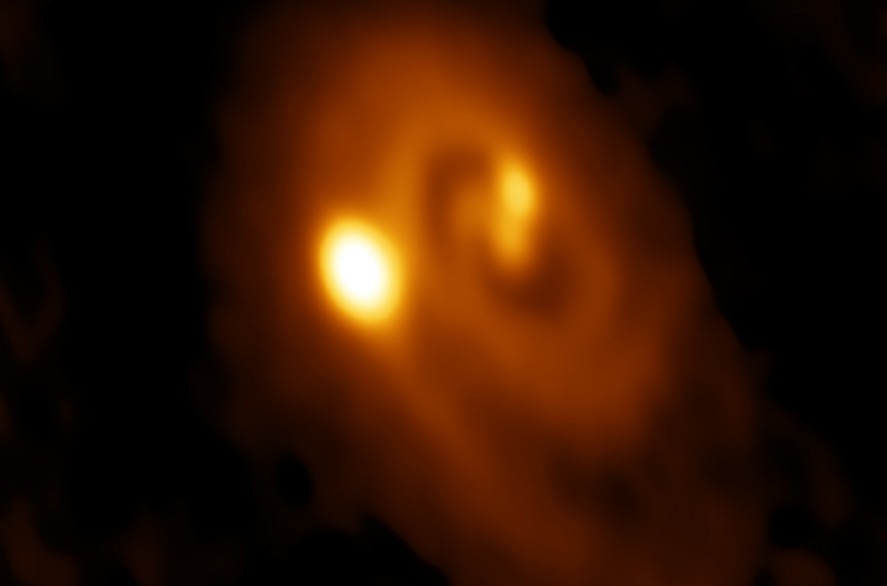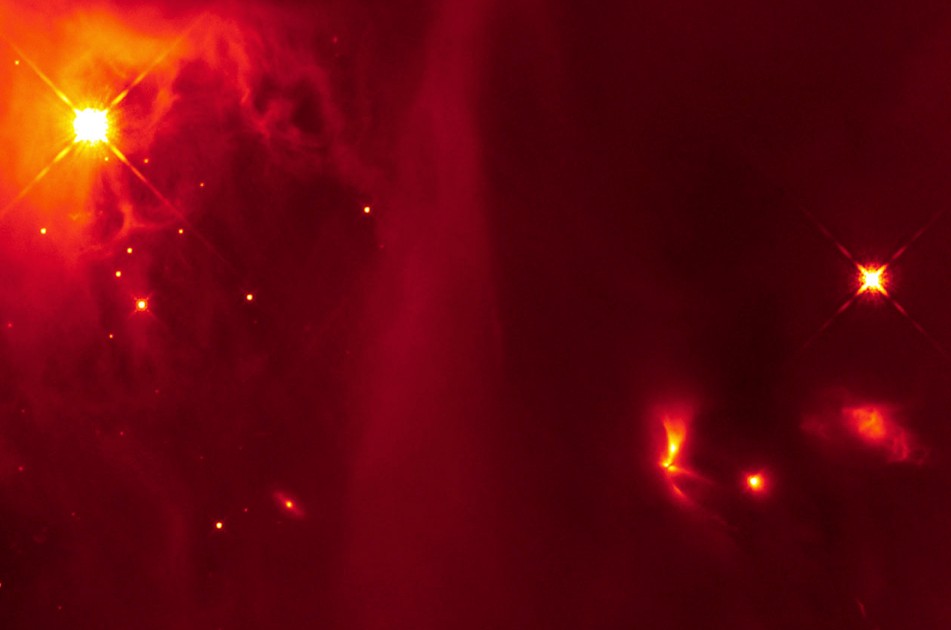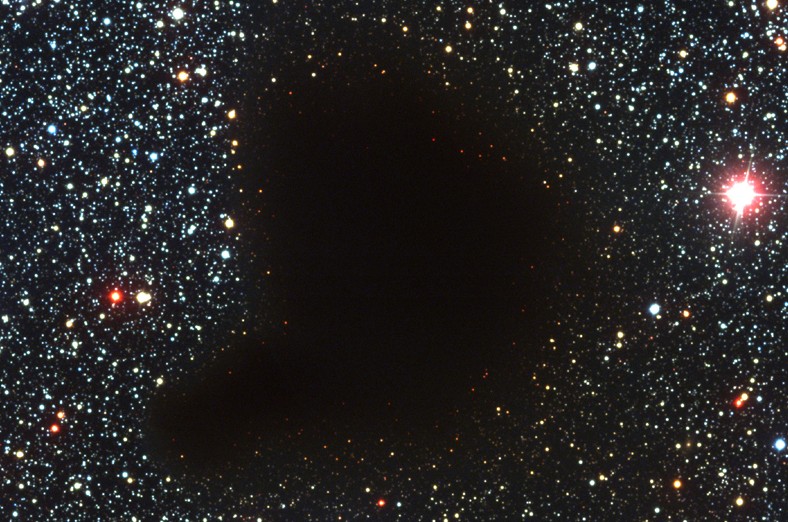Our sun had a twin when it was born, study

According to a new analysis by a theoretical physicist from UC Berkley and a radio astronomer from the Smithsonian Astrophysical Observatory at Harvard University, our sun, as well as every other sunlike star in the universe, had a twin when it was born.
Astronomers have long sought an explanation to why many stars have companions, including our nearest neighbor, Alpha Centauri, a triplet system. Are binary and triplet star systems born that way? Did one star capture another? Do binary stars sometimes split up and become single stars?
Astronomers have even searched for a companion to our sun, a star dubbed Nemesis because it was supposed to have kicked an asteroid into Earth’s orbit that collided with our planet and exterminated the dinosaurs. It has never been found.
The new assertion is based on a radio survey of a giant molecular cloud filled with recently formed stars in the constellation Perseus, and a mathematical model that can explain the Perseus observations only if all sunlike stars are born with a companion.
"We are saying, yes, there probably was a Nemesis, a long time ago," said co-author Steven Stahler, a UC Berkeley research astronomer. "We ran a series of statistical models to see if we could account for the relative populations of young single stars and binaries of all separations in the Perseus molecular cloud, and the only model that could reproduce the data was one in which all stars form initially as wide binaries. These systems then either shrink or break apart within a million years."
In this study, “wide" means that the two stars are separated by more than 500 astronomical units, or AU, where one astronomical unit is the average distance between the Sun and Earth (150 million km / 93 million miles). A wide binary companion to our Sun would have been 17 times farther from the Sun than its most distant planet today, Neptune.
Based on this model, the Sun’s sibling most likely escaped and mixed with all the other stars in our region of the Milky Way galaxy, never to be seen again.

A radio image of a triple star system forming within a dusty disk in the Perseus molecular cloud obtained by the Atacama Large Millimeter/submillimeter Array (ALMA) in Chile. Credit: Bill Saxton, ALMA (ESO/NAOJ/NRAO), NRAO/AUI/NSF
"The idea that many stars form with a companion has been suggested before, but the question is: how many?" said first author Sarah Sadavoy, a NASA Hubble fellow at the Smithsonian Astrophysical Observatory. “Based on our simple model, we say that nearly all stars form with a companion. The Perseus cloud is generally considered a typical low-mass star-forming region, but our model needs to be checked in other clouds."
The idea that all stars are born in a litter has implications beyond star formation, including the very origins of galaxies, Stahler said.
Stahler and Sadavoy posted their findings in April on the arXiv server. Their paper has been accepted for publication in the Monthly Notices of the Royal Astronomical Society.
Stars birthed in ‘dense cores’
Astronomers have speculated about the origins of binary and multiple star systems for hundreds of years, and in recent years have created computer simulations of collapsing masses of gas to understand how they condense under gravity into stars. They have also simulated the interaction of many young stars recently freed from their gas clouds. Several years ago, one such computer simulation by Pavel Kroupa of the University of Bonn led him to conclude that all stars are born as binaries.
Yet direct evidence from observations has been scarce. As astronomers look at younger and younger stars, they find a greater proportion of binaries, but why is still a mystery.
"The key here is that no one looked before in a systematic way at the relation of real young stars to the clouds that spawn them," Stahler said. "Our work is a step forward in understanding both how binaries form and also the role that binaries play in early stellar evolution. We now believe that most stars, which are quite similar to our own sun, form as binaries. I think we have the strongest evidence to date for such an assertion."
According to Stahler, astronomers have known for several decades that stars are born inside egg-shaped cocoons called dense cores, which are sprinkled throughout immense clouds of cold, molecular hydrogen that are the nurseries for young stars. Through an optical telescope, these clouds look like holes in the starry sky, because the dust accompanying the gas blocks light from both the stars forming inside and the stars behind. The clouds can, however, be probed by radio telescopes, since the cold dust grains in them emit at these radio wavelengths, and radio waves are not blocked by the dust.

This infrared image from the Hubble Space Telescope contains a bright, fan-shaped object (lower right quadrant) thought to be a binary star that emits light pulses as the two stars interact. The primitive binary system is located in the IC 348 region of the Perseus molecular cloud and was included in the study by the Berkeley/Harvard team. Credit: NASA, ESA and J. Muzerolle, STScI
The Perseus molecular cloud is one such stellar nursery, about 600 light-years from Earth and about 50 light-years long. Last year, a team of astronomers completed a survey that used the Very Large Array, a collection of radio dishes in New Mexico, to look at star formation inside the cloud. Called VANDAM, it was the first complete survey of all young stars in a molecular cloud, that is, stars less than about 4 million years old, including both single and mulitple stars down to separations of about 15 astronomical units. This captured all multiple stars with a separation of more than about the radius of Uranus’ orbit — 19 AU — in our solar system.
Stahler heard about the survey after approaching Sadavoy, a member of the VANDAM team, and asking for her help in observing young stars inside dense cores. The VANDAM survey produced a census of all Class 0 stars – those less than about 500000 years old – and Class I stars – those between about 500 000 and 1 million years old. Both types of stars are so young that they are not yet burning hydrogen to produce energy.

A dark molecular cloud, Barnard 68, is filled with gas and dust that block the light from stars forming inside as well as stars and galaxies located behind it. These and other stellar nurseries, like the Perseus molecular cloud, can only be probed by radio waves. Credit: FORS Team, 8.2-meter VLT Antu, ESO
Sadavoy took the results from VANDAM and combined them with additional observations that reveal the egg-shaped cocoons around the young stars. These additional observations come from the Gould Belt Survey with SCUBA-2 on the James Clerk Maxwell Telescope in Hawaii. By combining these two data sets, Sadavoy was able to produce a robust census of the binary and single-star populations in Perseus, turning up 55 young stars in 24 multiple-star systems, all but five of them binary, and 45 single-star systems.
Using these data, Sadavoy and Stahler discovered that all of the widely separated binary systems — those with stars separated by more than 500 AU — were very young systems, containing two Class 0 stars. These systems also tended to be aligned with the long axis of the egg-shaped dense core. The slightly older Class I binary stars were closer together, many separated by about 200 AU, and showed no tendency to align along the egg’s axis.
"This has not been seen before or tested, and is super interesting," Sadavoy said. "We don’t yet know quite what it means, but it isn’t random and must say something about the way wide binaries form."
Egg-shaped cores collapse into two centers
Stahler and Sadavoy mathematically modeled various scenarios to explain this distribution of stars, assuming typical formation, breakup and orbital shrinking times. They concluded that the only way to explain the observations is to assume that all stars of masses around that of the sun start off as wide Class 0 binaries in egg-shaped dense cores, after which some 60 percent split up over time. The rest shrink to form tight binaries.
"As the egg contracts, the densest part of the egg will be toward the middle, and that forms two concentrations of density along the middle axis," he said. "These centers of higher density at some point collapse in on themselves because of their self-gravity to form Class 0 stars."
"Within our picture, single low-mass, sunlike stars are not primordial," Stahler added. "They are the result of the breakup of binaries. "
Their theory implies that each dense core, which typically comprises a few solar masses, converts twice as much material into stars as was previously thought.
Stahler said that he has been asking radio astronomers to compare dense cores with their embedded young stars for more than 20 years, in order to test theories of binary star formation. The new data and model are a start, he says, but more work needs to be done to understand the physics behind the rule.
Such studies may come along soon, because the capabilities of a now-upgraded VLA and the ALMA telescope in Chile, plus the SCUBA-2 survey in Hawaii, 'are finally giving us the data and statistics we need. This is going to change our understanding of dense cores and the embedded stars within them,' Sadavoy said.
Source: UC Berkeley
Reference:
"Embedded Binaries and Their Dense Cores" – Sarah Sadavoy, Steven W. Stahler – Submitted on April 28, 2017 – Accepted in MNRAS – ArXiv server
Abstract
We explore the relationship between young, embedded binaries and their parent cores, using observations within the Perseus Molecular Cloud. We combine recently published VLA observations of young stars with core properties obtained from SCUBA-2 observations at 850 um. Most embedded binary systems are found toward the centres of their parent cores, although several systems have components closer to the core edge. Wide binaries, defined as those systems with physical separations greater than 500 au, show a tendency to be aligned with the long axes of their parent cores, whereas tight binaries show no preferred orientation. We test a number of simple, evolutionary models to account for the observed populations of Class 0 and I sources, both single and binary. In the model that best explains the observations, all stars form initially as wide binaries. These binaries either break up into separate stars or else shrink into tighter orbits. Under the assumption that both stars remain embedded following binary breakup, we find a total star formation rate of 168 Myr^-1. Alternatively, one star may be ejected from the dense core due to binary breakup. This latter assumption results in a star formation rate of 247 Myr^-1. Both production rates are in satisfactory agreement with current estimates from other studies of Perseus. Future observations should be able to distinguish between these two possibilities. If our model continues to provide a good fit to other star-forming regions, then the mass fraction of dense cores that becomes stars is double what is currently believed.
Featured image: A radio image of a triple star system forming within a dusty disk in the Perseus molecular cloud obtained by the Atacama Large Millimeter/submillimeter Array (ALMA) in Chile. Credit: Bill Saxton, ALMA (ESO/NAOJ/NRAO), NRAO/AUI/NSF

Commenting rules and guidelines
We value the thoughts and opinions of our readers and welcome healthy discussions on our website. In order to maintain a respectful and positive community, we ask that all commenters follow these rules:
We reserve the right to remove any comments that violate these rules. By commenting on our website, you agree to abide by these guidelines. Thank you for helping to create a positive and welcoming environment for all.